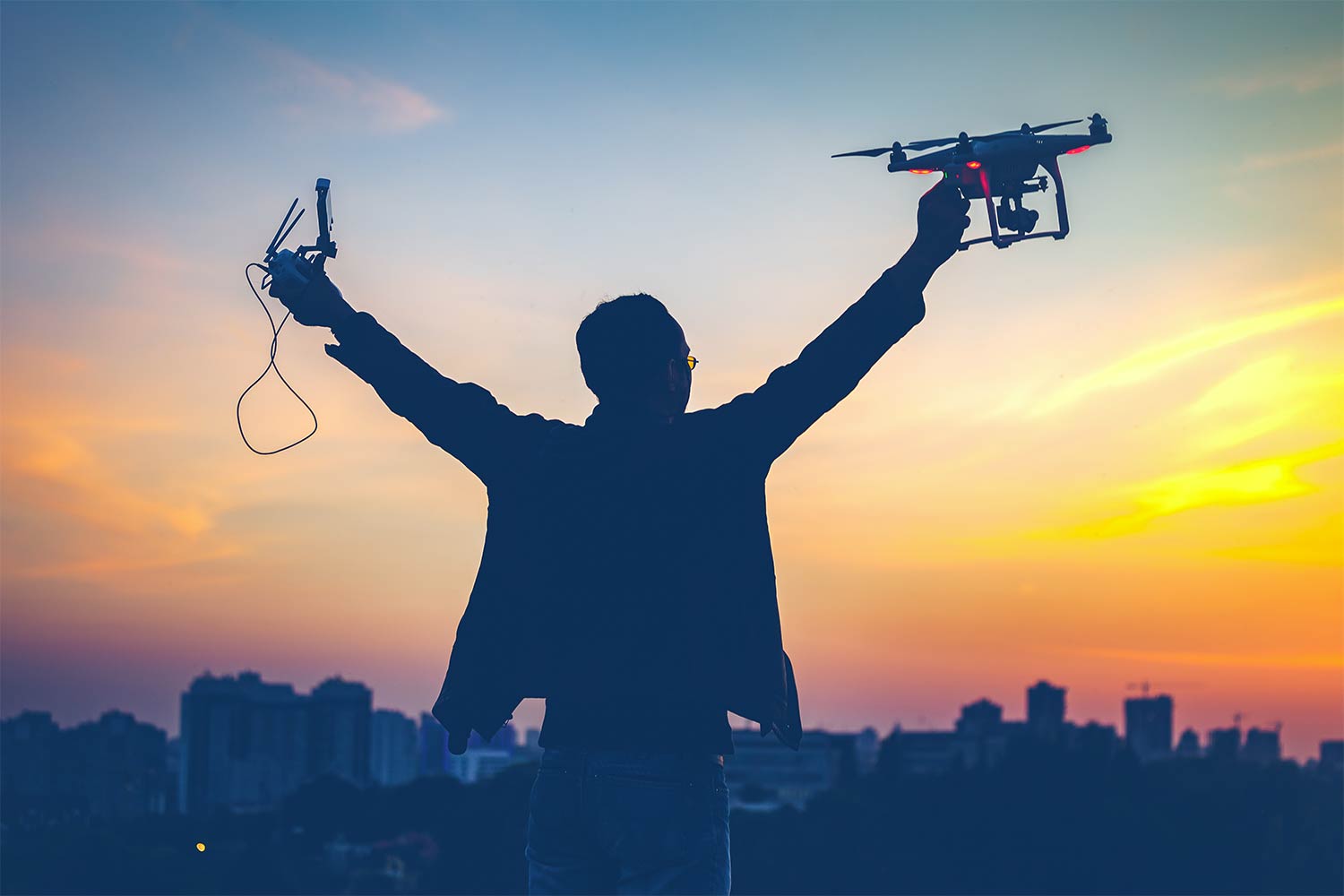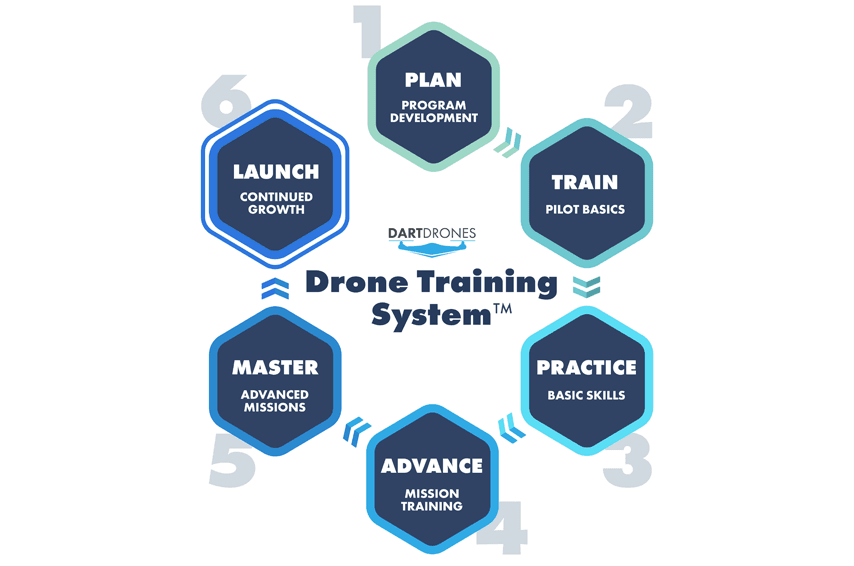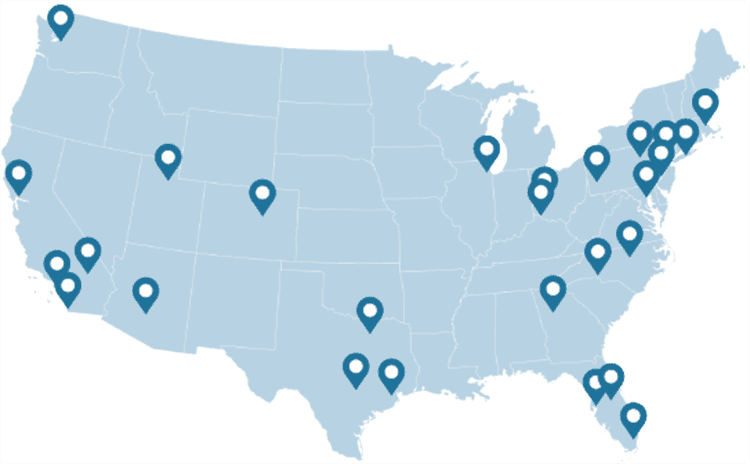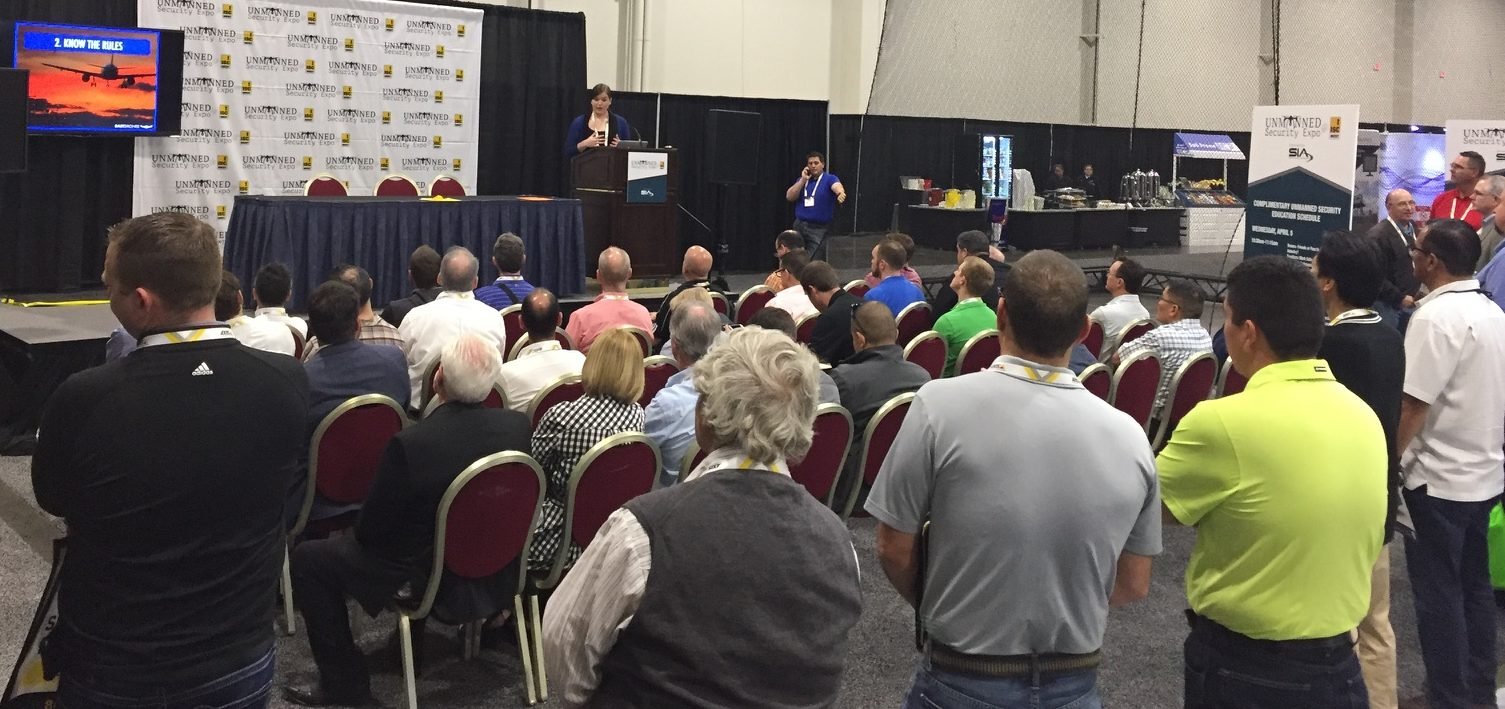
25 Steps to Launching a Security Drone Program
DARTdrones founder and CEO, Abby Speicher, took center stage last Thursday at the Unmanned Security Expo at ISC West in Las Vegas to talk about launching a security drone program within an existing security company.
Here’s a brief synopsis of the main points in Speicher’s speech:
We at DARTdrones have taught dozens of companies, police departments, and fire departments about launching and implementing a drone program. Most people tasked with launching their internal drone program are completely overwhelmed by the process and not sure where to start. This list is a quick start guide for a drone program. Pay attention to the order of the list as we put a lot of thought into what needs to be done first, later, and last. Don’t hesitate to reach out to our team if you have any questions: 800-264-3907.
1. Identify The Goals for Your Security Drone Program
Your team should identify how exactly they will use drones to help the company grow or improve profitability. Many drone models are built for specific use cases. You wouldn’t want to buy a drone designed for close proximity inspections and then decide later that you need it to be able to fly long distances. The security industry offers dozens of use cases for security drones including:
- Perimeter Control
- Facilities Security Inspections
- Monitoring Intruders
- Prison Security
- Parking Lot Monitoring
- Read More About Use Cases for Security Drones
Think about how your security team will be using drones.
2. Know The Drone Rules
Before beginning the process of launching a drone program, make sure you fully understand how the FAA regulations will affect your company’s drone program. There are dozens of rules and regulations that a drone pilot needs to abide by, but let’s look at some of the most relevant drone regulations for the security industry.
- Part 107 Remote Pilot Certificate – Most security teams will fall under the FAA’s “Commercial Purpose” category. In which case, the security team members that will be flying the drones will need to have their Remote Pilot Certificate from the FAA before they can fly legally. To get the Remote Pilot Certificate, a drone pilot needs to pass the FAA’s Airman Knowledge Exam for Remote Pilots. This exam is taken at an FAA Testing Center and consists of 60 questions. Most people have found that they need to study for between 15 – 20 hours for this exam. Don’t worry, if you are dedicated to passing the exam, you will be able to get it done. Resources: Do I Need To Take the Part 107 Exam? and Classes on Passing the Part 107 Exam
- Night Flights – If you wish to fly commercially at night with your drone, you will need to apply for a night flight waiver with the FAA. This can be a relatively easy process and usually a waiver will be granted within 60 – 90 days.
- Autonomous Flights – Many security drone use cases make the most sense with autonomous flights (when the drone flies a mission ,without a pilot, based on a preset flight). Currently, and probably for the next few years, the FAA does not allow drones to be flown beyond Visual Line of Sight. For now, the security team’s drone pilot needs to be able to watch the drone at all times. Someday in the future, it may be passed by the FAA that the security team can sit in their office while the drone does a perimeter search, but not today.
3. Recognize What It Takes
Starting a drone program is not a quick project that can be completed in a week. A commercial drone program requires extensive planning, maintenance, pilot training, and continued education. Make sure your team understands the effort that needs to go into this program.
4. In-House or Outsource?
Some companies have found launching a drone program more manageable by hiring an already trained and certified drone pilot to complete flights as needed as a contractor. Depending on how often you plan to use your drone, it may end up adding up to be more expensive to outsource. Think about if outsourcing your drone program is a good option for your team.
5. Create a Budget
How much is your company planning to spend on adding drones to the business? Here are some expenses to think about to launch a security drone program:
- Drone: $700 – $30,000 depending on model
- Accessories: $400 – $7,000
- Insurance Per Drone: $600 – $1,300 a year
- Part 107 Training: $250 – $800 a person
- Part 107 Exam Fee: $150 per person
- Platform Specific Training: $550 – $4,000 per person per day
- Thermal Imaging Camera: $2,000 – $14,000 depending on model
Other expenses to think about include advanced mission specific training, thermal imaging training, maintenance expenses, and upgrading to different drone models over time.
6. Consult Your Company’s Attorney
Before you get too far along the path developing your security drone program, consult your company’s legal team to make sure you are on the same page.
7. Choose a Chief Pilot for Your Security Drone Program
Many companies make the mistake of implementing a drone program without making one person in charge, or the “Chief Pilot”. No matter how many employees will participate in your drone program, one of them should be identified as responsible for maintenance, firmware updates, battery maintenance, and safety. If you already have a manned aircraft pilot on your drone team, they might make a great chief pilot.
8. Decide Which Drone is Right for You
Now that you have a pilot and a foundation set, you need to choose a platform. There are dozens and dozens of different drone models and manufacturers. Your budget should help you narrow down which type of drone your security team will start with. Most of the companies that we work with usually launch a drone program with a DJI drone. DJI currently controls 70% of the consumer drone market and offers excellent entry level to professional drone options.
9. Choose Your Camera
Most drones come with a camera attached. Will your team be using a thermal imaging camera? FLIR has developed thermal imaging cameras specifically for drones.
10. Consider a Training Drone
If your company decides on a $20K – $30K drone, you likely will not want trainees flying for the first time on such an expensive piece of equipment. Many companies purchase a DJI drone for $700 – $1,000 to function as a training platform. Later, new drone pilots can upgrade to the more expensive platform.
11. Purchase Your UAS Platform
Finally! You have jumped through a lot of the hoops and you’re ready to buy your drone. You have plenty of options, make sure you get one that fits your security team’s needs.
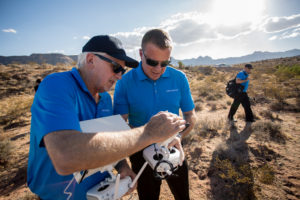 12. Decide on the Size of Your Drone Pilot Team
12. Decide on the Size of Your Drone Pilot Team
Think about who on your team will be flying the drones. Are there employees who have the spare time to add drone flights to their daily or weekly tasks? Will you need to hire additional employees? Keep in mind that you want your company’s drone pilots to always be current. You don’t want someone getting trained in May and not flying again until November.
13. Take and Pass Your Part 107 Exam
Passing the Part 107 Exam is so low on the list, because you really shouldn’t worry about it until your drone program is a go. Many new drone pilots are finding that studying for 15 – 20 hours allows them to do well on the Part 107 Exam. While there is a lot to learn for this exam (airspace classifications, aviation weather and micrometeorology, communication with airports, etc), don’t get overwhelmed. If you are committed to passing, you will be able to get through it and pass. Check out the DARTdrones Part 107 Test Prep Course which we offer both in-person and online courses to help you pass the Part 107 exam.
14. Obtain Aviation Insurance
Traditional liability insurance does not cover aviation, and thus don’t cover your drone. You will need to obtain aviation insurance for your drone. Read more about insurance for your drone here.
15. Complete Equipment Specific Training
Make sure you develop a training program that ensures your pilots have the knowledge they need to fly safely. Our DARTdrones Flight Training courses are designed to train pilots on how to fly their drones safely, legally, and gain a comprehensive understanding of their equipment.
16. Establish a Flight Log
Your company will likely want to keep your drone pilots on a strict flight-logging program. Track how often each pilot hits the skies and how many flight hours each of your pilots have logged.
17. Develop an SOP Manual
A company using a drone for business should create a Standard Operating Procedures (SOP) Manual that will be customized to your organization’s flight locations, proximity to airports, number of pilots, and requirements for safety levels. DARTdrones offers consulting services for companies building their SOP manual.
18. Develop A Maintenance Schedule
Under FAA Part 107 Regulations, the commercial drone pilot is required to develop a maintenance schedule. Don’t skip this step as it is a requirement of the FAA.
19. Implement Commercial Drone Software
Software options have been developing rapidly and could change between the time you begin developing your program and when you’re ready to fly. Don’t let the number of software options overwhelm you.
 20. Market Your New Security Drone Program
20. Market Your New Security Drone Program
Think about how you announce your new drone program to your company and to the public. Not everyone is excited about a security drone flying near their property. Think about how your customers and employees will respond and try to make an announcement that gets them excited. It could be helpful to find a way show your customers how the drones are going to help them either save time or money.
21. Upgrade Your Security Drone Platform
Once you’ve gotten this far, you’ll know how you can benefit from drones and where to go moving forward. Typically within 6 – 12 months of launching a drone program, companies are looking into and excited about new use cases and new drone models on the market.
22. Advanced Training
Once your company upgrades its platform, the ability to hold heavier payloads becomes a possibility. Get your team trained on thermal imaging, LiDar, or advanced photography once they have learned the basics.
23. Establish Annual Training Requirements
Finally, make sure you have clearly defined annual training requirements. The equipment and industry evolve so quickly you need to make sure annual training requirements are established.
We at DARTdrones have helped dozens of companies implement a commercial drone program from both a training and consultations standpoint. We are always looking for the next challenge, so don’t hesitate to reach out to our team to ask questions.
DARTdrones, with more than 40 expert pilot instructors, is the national leader in in-person drone training throughout the United States. Contact our team at 800-264-3907 to learn more about launching a security drone program.



